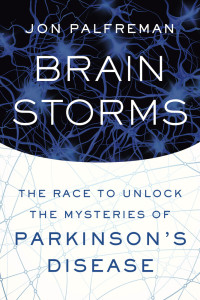The irony was that this wasn’t my first brush with Parkinson’s. Decades before, I had reported on the condition, generating two Nova documentaries and a book on the subject. But to be frank, my journalistic familiarity with Parkinson’s disease did not initially help me to cope with my diagnosis. I left the hospital in a state of shock.
It took me over a year to come to terms with it. The only person I told during the first three months after my diagnosis was my wife. I consulted other neurologists who confirmed I had Parkinson’s disease. I didn’t reach out to other Parkinson’s sufferers. The fragile, bent, trembling figures I observed in neurologists’ waiting rooms saddened and angered me. Was this really who I would become?
Gradually, I began to think more clearly. Because there was no denying my condition, it made sense to embrace it. I read everything I could about Parkinson’s disease and spoke to neuroscientists, clinicians, and fellow patients. After all, as a longtime science journalist, I was better placed than most to figure out the state of Parkinson’s research and ascertain what kind of future I faced. In a profound sense, understanding Parkinson’s disease and finding a cure are now my journalistic beat.
Can Parkinson’s be slowed, stopped, or even reversed? Can the disease be prevented before it starts, like polio and smallpox? Perhaps. As I write in my new book “Brain Storms: The Race to Unlock the Mysteries of Parkinson’s Disease,” published September 15 by Farrar, Straus & Giroux, this age of neuroscience offers hope for developing new treatments. Many scientists studying the human brain view Parkinson’s as a pathfinder disease, one that may be key to understanding the organ’s complexity.
The bad actor causing Parkinson’s, many researchers argue, is a common protein called alpha-synuclein, which goes rogue, forming sticky toxic aggregates that jump from cell to cell inside the brain, killing neurons as they go. New anti-Parkinson’s therapies targeting alpha-synuclein are about to enter clinical trials and I will be volunteering to participate in these crucial evaluations.
My diagnosis has forced me to explore the tension between my professional and personal lives. Journalists seek truths about the current state of science. But patients thrive on hope about advances on the horizon. So, whether or not this current round of trials turns out to benefit me, I remain convinced that this disease will be vanquished one day in the not too distant future.



